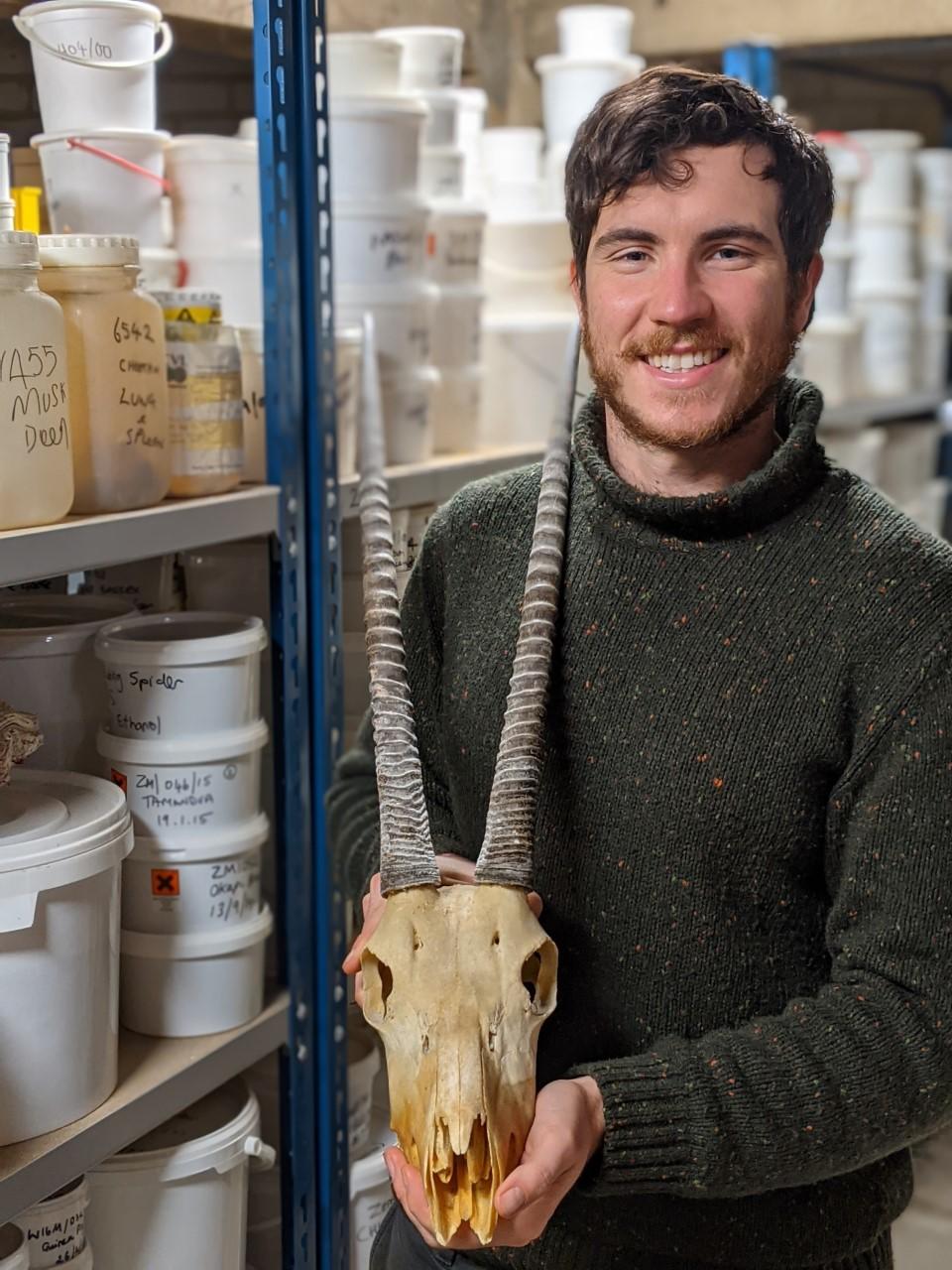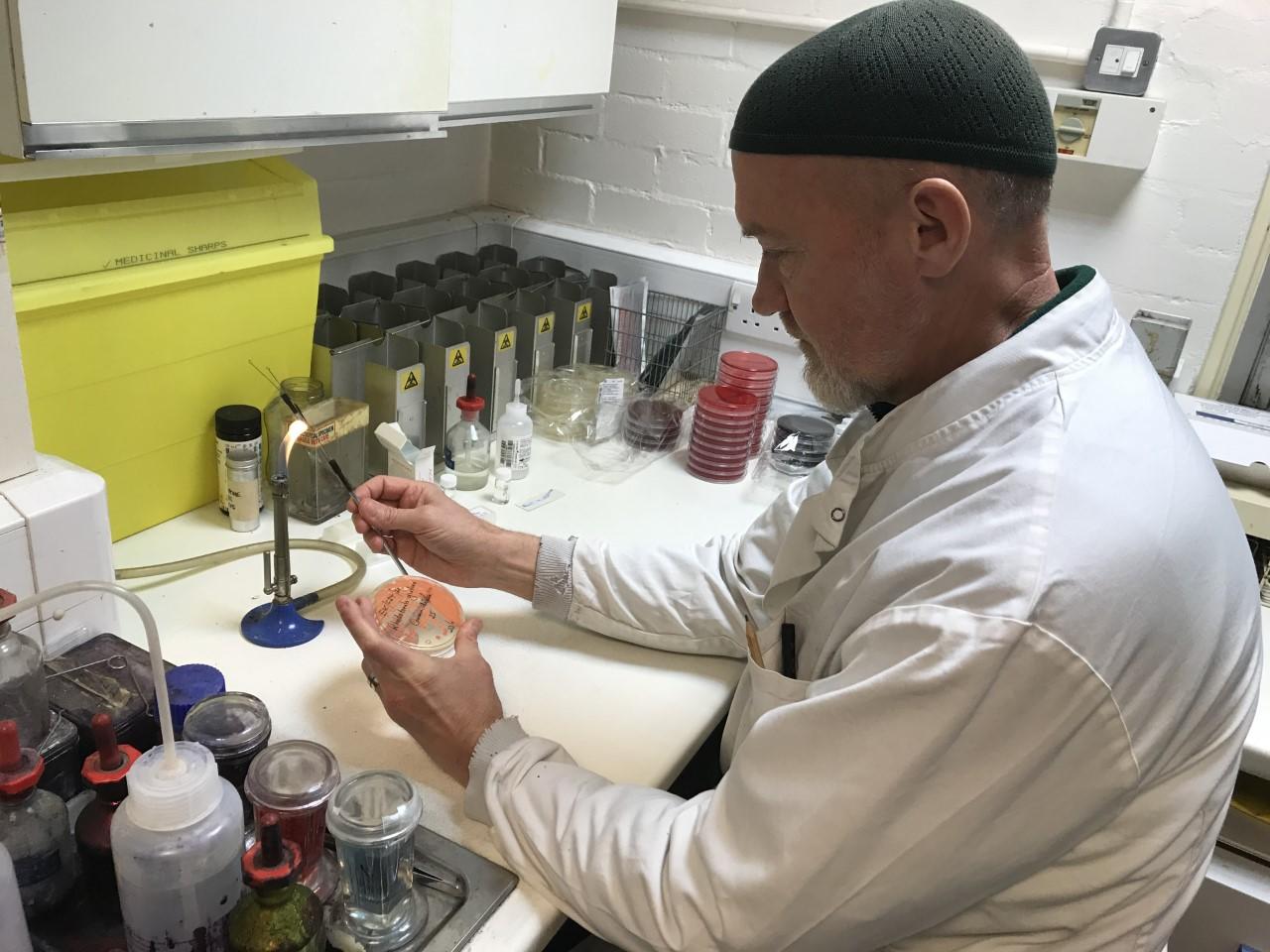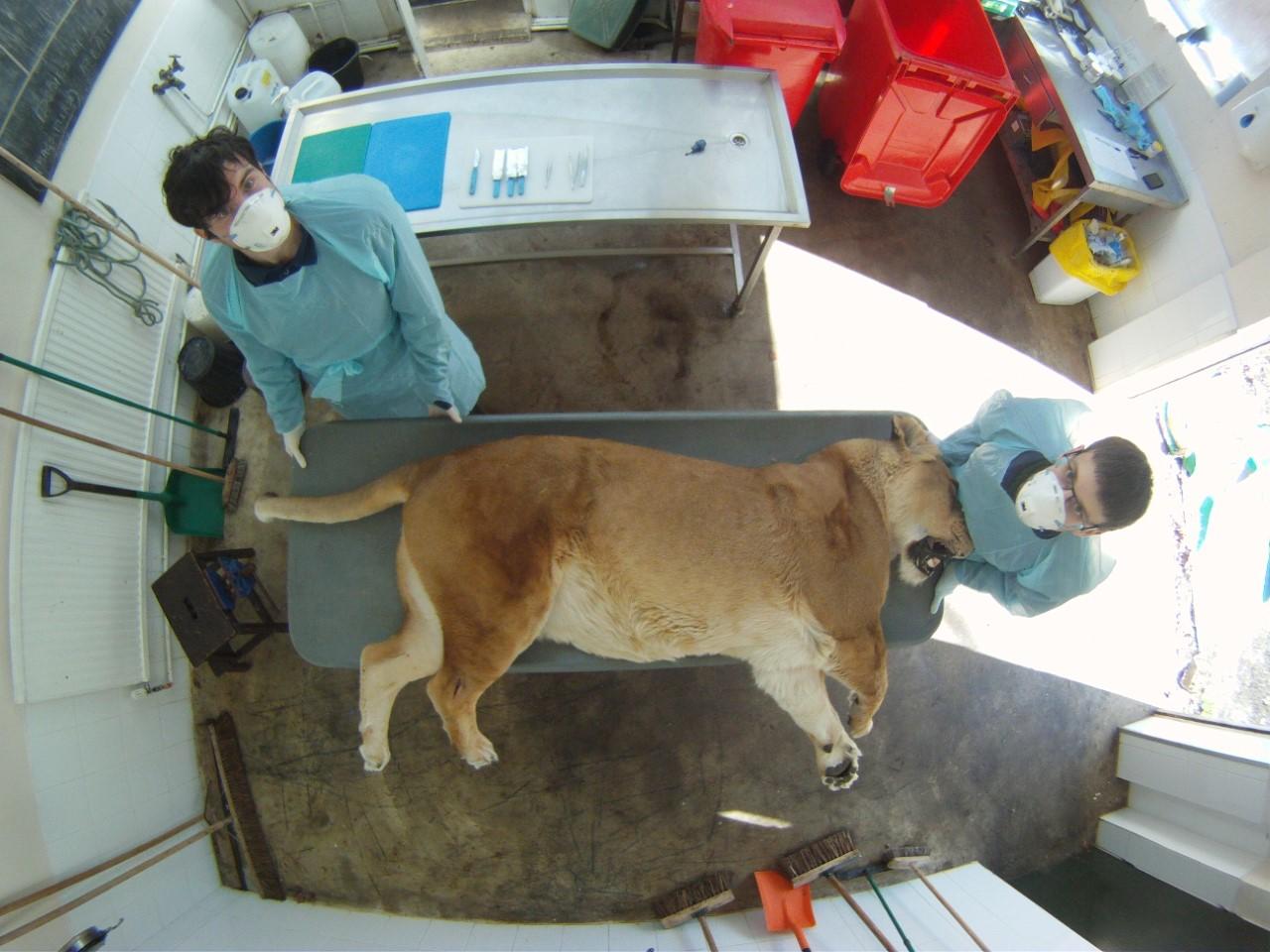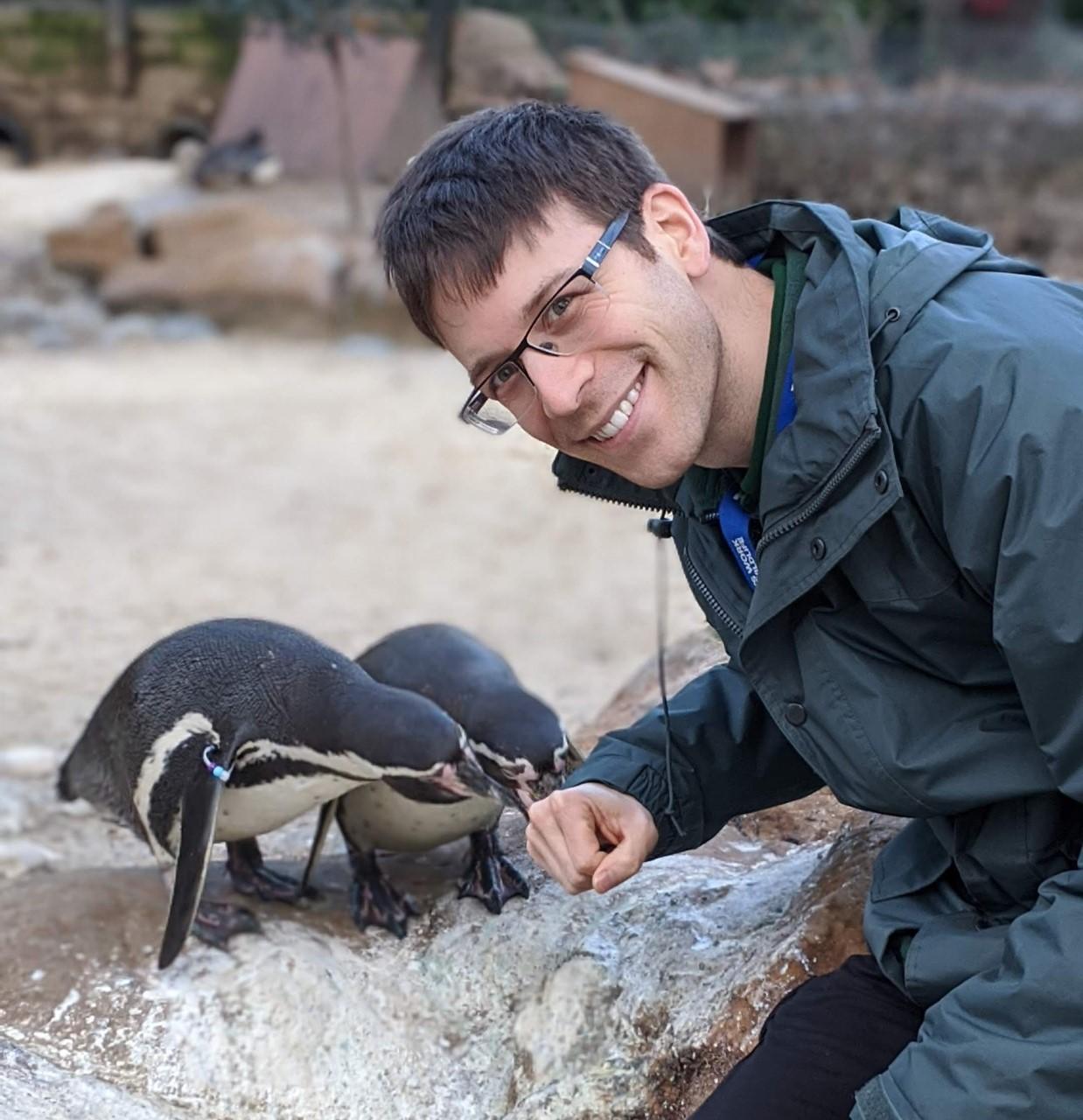Would you like to begin by introducing yourself?
I’m Simon Spiro, the wildlife veterinary pathologist for the Zoological Society of London (ZSL). Practically, this means that it is my responsibility to monitor disease trends in the 25,000 animals that live at our London and Whipsnade zoos, mostly through gross and histological post-mortem examinations.
Could you give us an overview of what veterinary pathology involves?
Within the College, veterinary pathology is divided into three subspecialities: veterinary anatomic pathology (gross and histopathology), veterinary clinical pathology (cytology and most lab-based testing) and the new veterinary microbiology. I am an anatomic pathologist, and my work would be broadly recognisable to medical examiners within the NHS. I am presented with a carcass, which I proceed to dissect and examine; tissues are fixed in formalin and I then examine these histopathologically to reach a diagnosis. This is reported to the clinical staff, keepers, curators and other stakeholders, who may then alter their own protocols in response to this feedback.
Could you tell us what sparked your interest in veterinary pathology and why you chose to specialise in zoological animals?
For someone like me who loves variety and constant learning, zoo pathology is the dream career; I am constantly encountering new challenges and learning about bizarre new diseases and anatomies that I have never had to consider before.
I did my veterinary degree at Cambridge, whose syllabus heavily focuses on the scientific underpinnings of veterinary medicine, so pathology was always a key part of my education. I did an intercalated degree in pathology and became fascinated by microbial pathogenesis and how individual proteins would conspire to have complex pathological effects. I loved clinical work, but I was just so fascinated by these pathogens that I went straight from vet school into a PhD in infectious diseases, working on HIV and ebolavirus, and then back to veterinary medicine for a post-doc developing vaccines for chickens.
I enjoyed the theory, but I found the day-to-day process of research very trying, as the long-term nature of the experiments meant that weeks or even months could go by between successes. Pathology was the perfect solution, letting me mix up the research with a daily case load, so I could always leave work feeling like I had achieved something. For someone like me who loves variety and constant learning, zoo pathology is the dream career; I am constantly encountering new challenges and learning about bizarre new diseases and anatomies that I have never had to consider before.
Could you tell us what your favourite animal is and why?
I get asked this a lot, and my opinion often changes depending on whatever I happen to be diving into at the time; it was starfish a few weeks ago, bees last month and snakes now! However, my most consistent favourite is the short-beaked echidna. I’ve never seen a live one, but I think it just personifies everything I love about weird biology.
How many species do you work with, what are the difficulties you face with caring for so many different species and how do you overcome them?
We maintain just over 700 species at our two zoos, but I also keep an eye on any wildlife that dies within our perimeters to try to identify threats before they can infect our animals. The variety is astounding. The hardest cases are invertebrates, as they are so diverse and so tiny that you usually have no idea what you are looking at. Luckily, these animals are so small that you can get the whole carcass into a histo cassette. It’s a bit easier working out the functions of tissues histologically than it is grossly, and you are not time limited. Ultimately, the only way to cope with all the variety is to remember your basic principles and think logically. It doesn’t matter if it’s an ostrich, an orangutan or an octopus, the basic functions of digestion, respiration, excretion, etc will all have to happen somewhere!
Could you tell us more about the team you work with?
I’m part of a team called Wildlife Health Services. This is a team of about 20 people, consisting of highly qualified and experienced vets and vet nurses, as well as our Evidenced-Based Animal Care (EAC) who are responsible for animal welfare, training, nutrition and zoo-based research. Pathology itself is a small team within that; just myself, a technician, Ethan Wrigglesworth, and a microbiologist, Shaheed Macgregor. Shaheed has been our microbiologist for over 30 years, and is a treasure trove of expertise and institutional memories.

Having the clinical vets, EAC and pathology working so closely together lets us have a really holistic approach to the animals in our care. For example, if I suspect a nutritional basis to any of my diagnoses, our nutritionist can provide me with complete records of every diet that animal has ever had and we all work together to balance that species’ clinical, nutritional and welfare needs for optimal health and happiness.

Could you describe an average week in the veterinary pathology lab at ZSL?
On the thankfully rare occasions we do megafauna, such as an elephant or rhinoceros, it will take a team of 20 all day.
The great thing about having 700 species, each with hundreds of possible diseases, is that there is no average week! Sometimes days may pass with no post mortems – in this time I will read histo slides, engage in research, write lectures and finalise my reports. When post mortems do happen, it is often at short notice. As our animals are all on site and well monitored, I will often receive a carcass within minutes of its death, and will carry out the post mortem while it is still warm. This is vital, as many of our larger species are too big to store, while our many ectotherms (invertebrates, amphibians, reptiles and fish) will rot within hours of death, even if kept chilled (remember, all their enzymes and commensal bacteria are already optimised to work at low temperatures).
Ethan and I will set to work or, as often happens, we will delegate the dissecting to the MSc students in Wild Animal Health and Wild Animal Biology that we run between the zoo and the Royal Veterinary College. Together, we will work towards a tentative diagnosis, sending samples next door to Shaheed for real-time parasitology, cytology and microbiology.
Ultimately, carcass size is the biggest factor in how much we do in a day. I do a lot of work on partula snails, a species that is extinct in the wild but we have been breeding in captivity for release. As clinical exams of tiny snails are quite challenging, pathology is the key methodology for monitoring population health and ensuring that our releases do not introduce any new diseases into the fragile population. These post mortems are quite fiddly (getting a 0.5 gram snail out of its shell is no joke), but I can do about ten per hour. On the other hand, a large antelope will take us several hours due to the logistics of working with such a heavy carcass.
On the thankfully rare occasions we do megafauna, such as an elephant or rhinoceros, it will take a team of 20 all day, two of whom are just replacing blades on our PM40s; rhino skin is 5 cm thick and can blunt a blade in seconds. We do not need to do any reconstruction afterwards like medical pathologists, but often we will be preserving hides and skeletons for museums, which can be very demanding; removing the pluck from an elephant, the only mammal without a pleural space, without breaking a single rib, is hours of work on its own! The pluck is the tongue, larynx, trachea, oesophagus, thyroid, lungs and heart. Removing all these organs together let's us examine the cardiorespiratory system as a whole, allowing us to assess things like malformations of the great vessels of the heart or inhaled foreign bodies.

How do you encourage effective collaboration among your team?
I am extremely lucky to work with an incredibly motivated and dedicated team; everyone in Wildlife Health Services loves what they do and this makes them all a pleasure to work with. As we are so small, very few people have the same job title. This means that we each have our own responsibilities, and everyone respects the specialist knowledge and abilities that let us fulfil that niche. Ultimately, it is mutual respect and personal relationships that make collaboration come naturally.
You and your team create a lot of research items, how do you share this information across the zoological community?
... a lot of the real collaboration comes from the tiny size of the zoo pathology community; it is collaborative and we all know each other and help each other out as much as we can.
When working with such rare animals, I constantly have the opportunity to make discoveries, and it is vital that these are shared. The easiest way to do this is through the Zoological Information Management Software (ZIMS), a database that is shared across hundreds of zoos. This allows for the easy sharing of anonymised data; for example, if I’m worried about hypertrophic cardiomyopathy in a species, I can use ZIMS to see the heart weights of every post mortem submitted to the system across multiple institutions and determine a normal range. But a lot of the real collaboration comes from the tiny size of the zoo pathology community; it is collaborative and we all know each other and help each other out as much as we can.
One of my recurring ideas is simply to have a blog or twitter feed full of photos and factoids that I’ve encountered from my own cases – all the little things that are too inconsequential to publish but would save future pathologists a lot of hassle. Entries would be things like 'FYI Fea’s flying frogs commonly have severe, unilateral testicular enlargement – it looks like a tumour but it seems to be normal!'. The problem is that ZSL gets understandably jumpy about anything to do with publicising animal deaths.
Could you tell us about your most memorable piece of research and why it is your favourite?
I was recently doing a post mortem on a Montserrat oriole, a critically endangered bird, when I discovered large numbers of Lafora-like polyglucosan bodies in its brain. The bird had died of old age, so I don’t think it had Lafora disease, but it got me wondering about whether it could have the trait and whether homozygous birds may be more affected. As captive breeding is so important for this species, and the founder population is so small, a mutation like this is the sort of thing that we really don’t want to become established. I now have a student applying for a grant to examine dozens of stored brains from this species and compare them to stud-book records to see how widespread this trait is, and whether there is a familial connection. It’s exciting to think that an incidental finding on a routine post mortem could positively affect the genetics of a whole species.
What is the most unusual case you have ever come across during your time at ZSL?
I had my strangest case in my first week on the job! It was an Arapaima gigas, the largest freshwater fish in the world. This one was five feet long and weighed 40 kg. It was covered in bony scales that no knife would stand a chance against, so I had to make the incisions with bolt cutters. Arapaimas are actually air-breathing fish, often staying near the surface gulping air into their swim bladder where they can do rudimentary gas-exchange. The proto-larynx was just a simple hole in the oesophagus with a muscular valve. This poor fish had gulped tank water instead and drowned. Everything about the case was fascinating – from the anatomy to the simple fact that a fish might drown!
Many diseases and infections can be spread across different species of animals; what precautions do you and your team take to stop this while still giving the animals a high quality of life?
Expertise and experience are some of our main weapons in this case; if we know the risks, we can plan for them. Rodents are the biggest threat – they carry everything from Yersinia pseudotuberculosis to cowpox and encephalomyocarditis virus. In the old days we had a cat that served as our chief mouser, but unfortunately Toxoplasmosis is very dangerous to marsupials, so that was the end of that. Constant monitoring, reporting and vigilance is our best protection.
What is your best memory from your time at ZSL so far?
It sounds very cheesy but my favourite memory is from our Thanksgiving party this time last year. Owing to COVID-19, we have isolated pathology from the rest of Wildlife Health Services, so I have barely seen most of my colleagues, except over Teams, for nine months now. I miss everyone, and I miss the dynamism that comes from being in the same room as my colleagues.
As our conservation work is almost entirely funded by zoo admissions, ZSL is massively suffering from the lockdowns and have a financial black hole that we need to fill. This is putting great strain on everyone, and potentially the quality of the service we can provide – our fume hood broke recently so now I am trimming tissues in the open air with a respirator on! We have been greatly helped by the Crick Institute, who are doing some of our histo processing for us to help us cut costs, but if any pathologists reading this have spare supplies or old equipment that they would like to loan or donate to the zoo, we would greatly appreciate the help!


